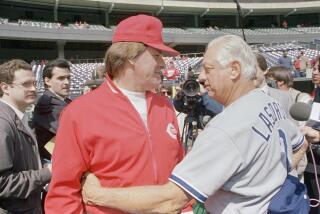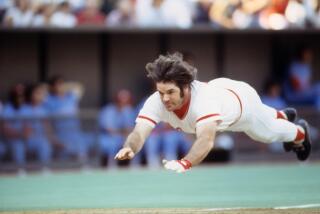Baseball stuck between fact, friction after Roger Clemens verdict
Bud Selig belatedly wanted the truth on baseballâs steroid era. He said so, six years ago.
His investigators spent more than 20 months on the case, and more than $20 million. They delivered some trophy names, most prominent among them Roger Clemens.
On Monday, a federal jury rendered this verdict on the Clemens evidence in that report: unbelievable, on all counts.
The steroid era will haunt Selig for the rest of his days. The truth will remain forever murky. The bill will come due every year, when fans and voters debate whether to divide the Hall of Fame ballot into cheaters and non-cheaters.
Clemens, the lone player to mount a legal challenge to the Mitchell Report, testified before Congress that he never had used steroids or human growth hormone.
Andy Pettitte said Clemens confessed that he had. Brian McNamee said he had injected Clemens with performance-enhancing drugs.
The feds charged Clemens with perjury. Pettitte testified he might have misremembered, McNamee took hit after hit to his credibility, and the jury on Monday found Clemens not guilty on all six counts.
The first instinct is to say that the jurors do not vote for the Hall of Fame, that proof beyond a reasonable doubt is not required for a voter to omit Clemens from his ballot.
Mitchell and his investigators believed McNamee. They are not alone, as even Clemens realized when he testified before Congress in 2008.
âI am never going to have my name restored,â Clemens said in his statement to Congress. He added: âI know that some people will still think I am lying no matter what I say or do.â
Yet the federal government unleashed its financial power and subpoena power in an effort to prove Clemens used steroids. The feds failed with Clemens, and the feds failed with Barry Bonds too.
The next Hall of Fame ballot comes out in December. Clemens, winner of a record seven Cy Young awards, will be on it. So will Bonds, winner of a record seven most-valuable-player awards. So will other players tagged with steroid allegations despite an absence of proof, including Jeff Bagwell and Mike Piazza.
If Clemens and Bonds were the best of their era â no matter how tarnished the era â should the players join the Hall of Fame?
If so, should Mark McGwire and Rafael Palmeiro join them, even if McGwire has acknowledged the use of performance-enhancers and Palmeiro has failed a drug test?
If not, in the absence of undisputed evidence, where does a voter draw the line between suspicion and belief?
These are the debates that will recur with every ballot of the next decade, and with them the reminders that Selig commissioned the Mitchell Report upon the threat of congressional intervention.
Selig hoped the Mitchell Report would provide closure to the steroid era. Yet Selig and the playersâ union have resisted the most fundamental of Mitchellâs proposed reforms, the recommendation that baseball outsource its drug testing to an independent agency.
Congress did prod the league and the union into a program of which the sport can be proud. But the spat between the league and the union over the Ryan Braun appeal, and the agreement to reduce the second Manny Ramirez suspension from 100 games to 50, only underline the need for a third party to provide uniform administration and enforcement.
When he issued his report five years ago, Mitchell said baseball should learn from its mistakes and move on. Selig agreed; Clemens did not. Closure does not come with a timetable.
twitter.com/BillShaikin
More to Read
Go beyond the scoreboard
Get the latest on L.A.'s teams in the daily Sports Report newsletter.
You may occasionally receive promotional content from the Los Angeles Times.











